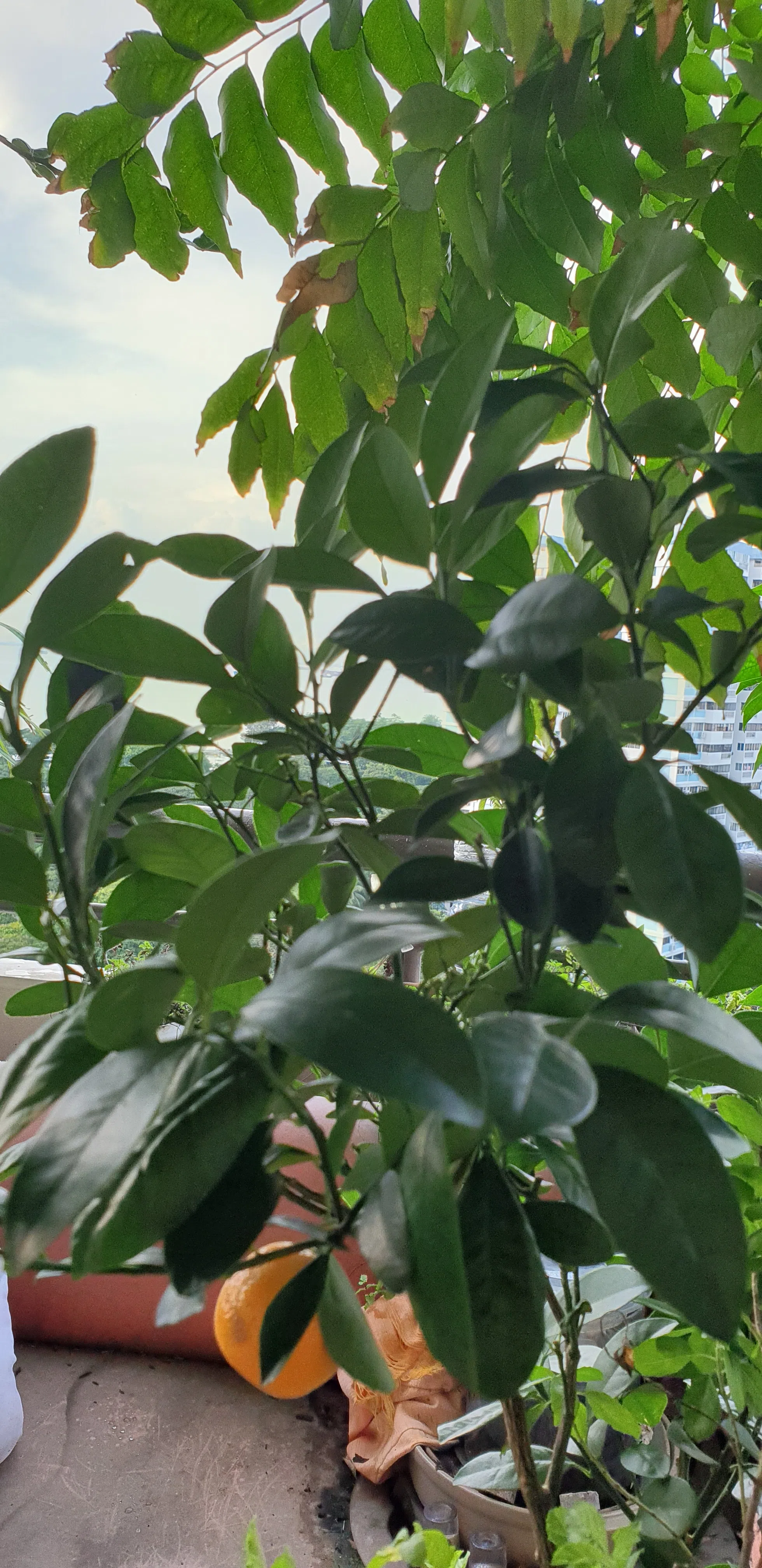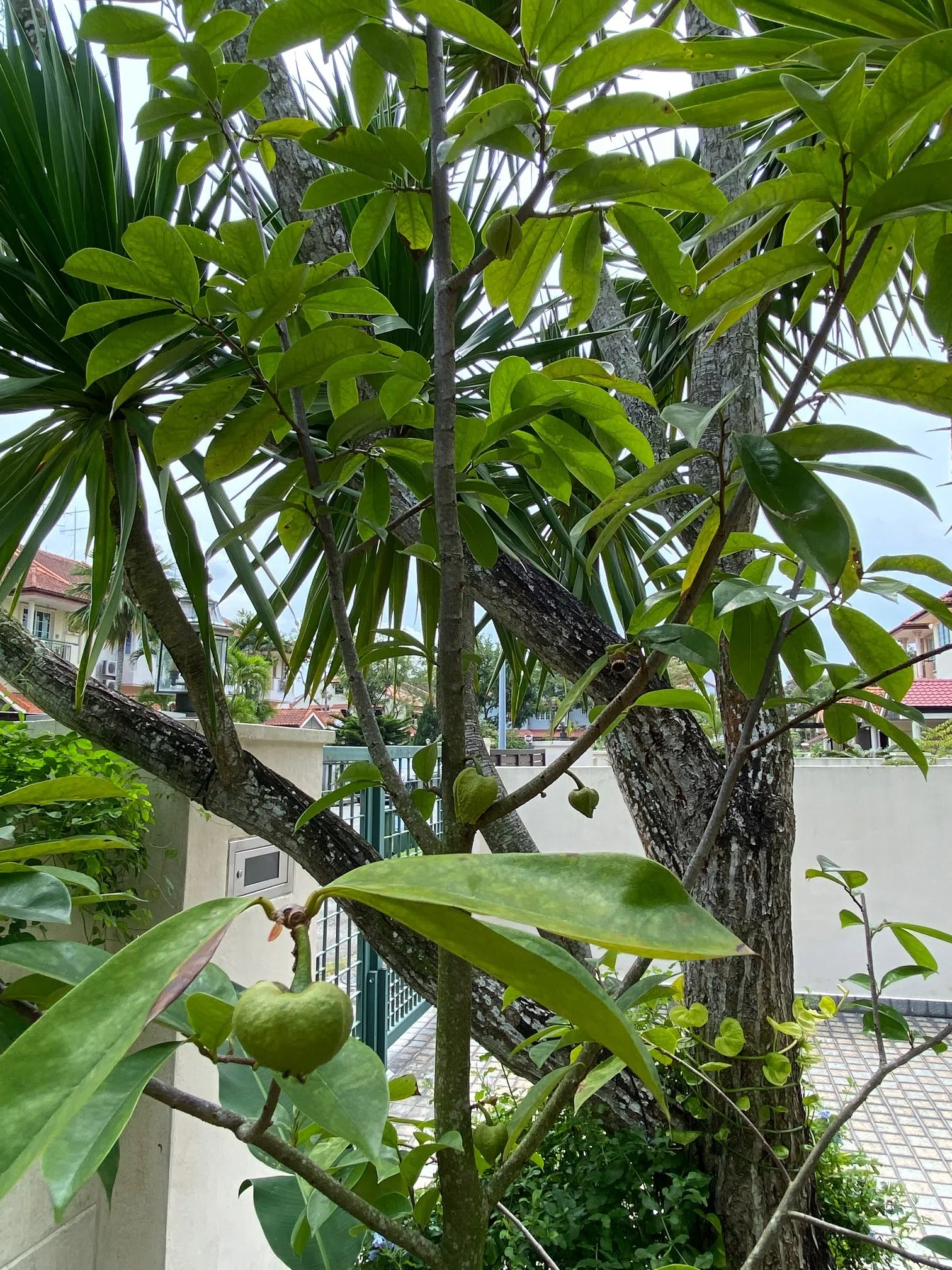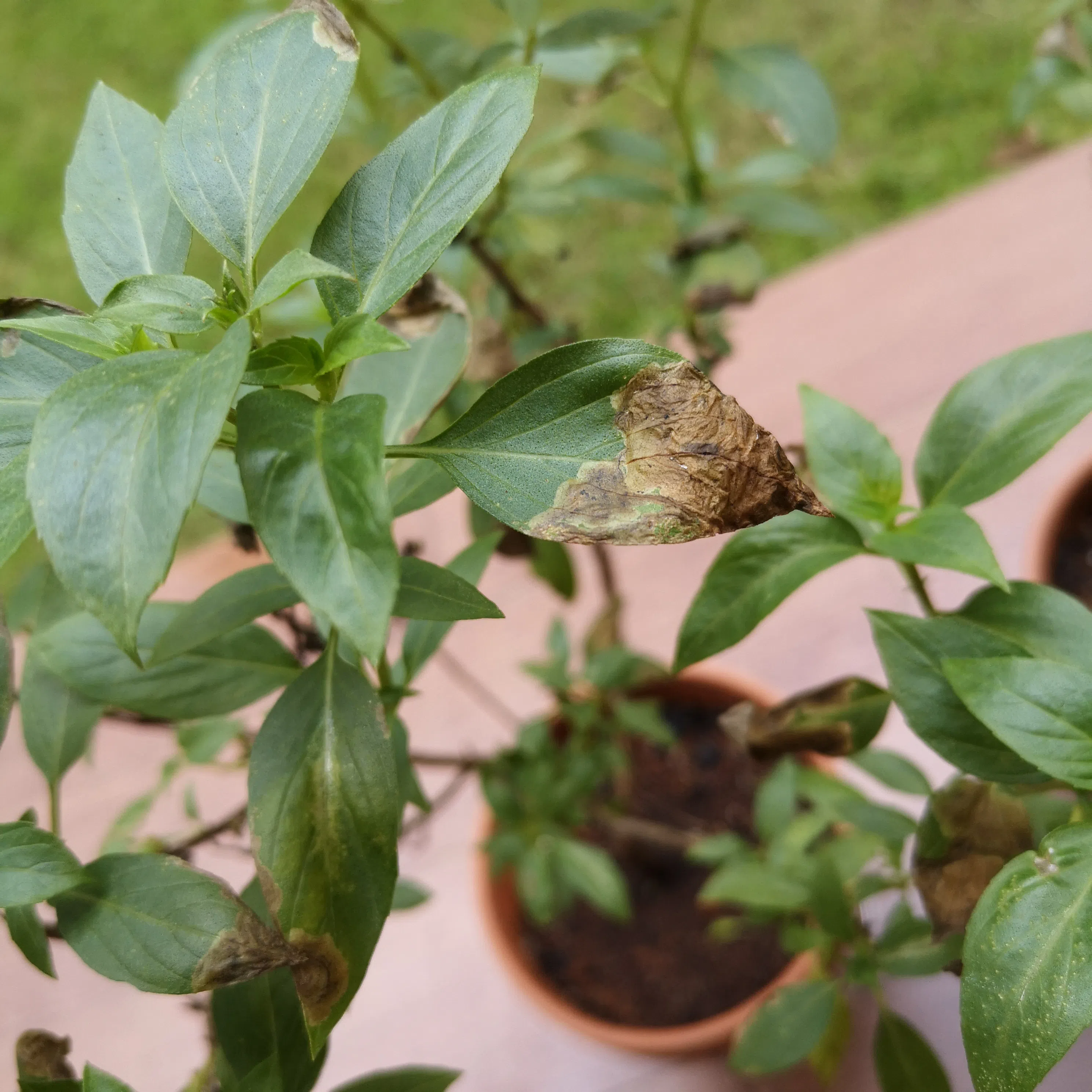Root Awakening: Grow Desert Rose in a sunny spot
Sign up now: Get ST's newsletters delivered to your inbox

The desert rose is a sun-loving plant.
PHOTO: THERESA AW
Wilson Wong
Follow topic:
Grow Desert Rose in a sunny spot
My Adenium Desert Rose has developed yellow leaves. I have pruned the leaves but am unsure what is wrong. The plant is kept in an indoor spot which faces south-west and does not always get direct sunlight. It was last watered around six days ago. I usually water it twice or thrice a week. Is the plant salvageable?
Also, weeds seem to be growing in the pot. Should I remove them?
Theresa Aw
The Desert Rose is a sun-loving plant. If grown in the shade, it will appear stretched and not flower due to the lack of light. Also, in a shadier location, the root zone will not dry out fast enough, especially if you are using a moisture-retentive growing mix.
The yellowed leaf edges could be due to wet feet. Try moving the plant to a sunny spot. The issue should resolve itself with a regular feeding schedule and a porous growing mix.
The weed is botanically known as Talinum paniculatum. Its common name is Jewels of Opar. The plant has medicinal properties and can be eaten as a cooked vegetable. You can transplant it or root its stem cuttings and grow them separately.
Lime plant needs sunlight to thrive

Under optimal conditions, lime plants in Singapore can flower at least twice.
PHOTO: HSU LI REN
How do I get my lime plant to flower and bear fruit? When I bought it a year ago, it had a number of fruit.
Hsu Li Ren
The lime plant can flower at least twice a year under optimal local conditions. Note that it is not shade-tolerant and should be grown in a spot where it can get at least six hours of direct sunlight a day. A lack of light will lead to a largely vegetative plant, with little or no flowering at all.
Ensure it is not shaded by surrounding plants, and rotate the pot regularly to encourage an even growth habit.
Poor fruiting of soursop may be due to pollination issues

Soursop grown in urban gardens often do not produce much fruit.
PHOTO: SIM KHIM HUANG
My young soursop tree appears to be flowering, but its tiny fruit dried up and dropped off over the past months. How can I encourage proper fruiting?
Sim Khim Huang
Soursop grown in urban gardens often under-perform in terms of fruit production. It could be due to a lack of pollinators, so hand pollination is required to ensure more reliable fruit formation.
Soursop flowers are protandrous – its male parts mature faster and shed pollen before the female parts become receptive to pollen.
Collect the pollen from the flower when it opens in the morning and store it overnight in a refrigerator. The next day, after the stigma – a sticky site found in the centre of the flower – becomes receptive, transfer the pollen by dabbing some of it on a cotton bud and brushing it against the stigma. If pollination is successful, a soursop fruit will be formed.
Alocasia has fungal or bacterial spots

This Alocasia has fungal spots. Fungicides, which are available for sale in local nurseries, may be applied as a preventive measure.
PHOTO: JOANNE TAN
I have had this Alocasia for a few months. Its leaves recently started turning yellow. How can I nurse it back to health?
Joanne Tan
From the picture, it appears there are fungal or bacterial spots on your Alocasia leaves.
Grow your plant in a bright and airy space so excess water on the plant’s leaves can evaporate. Protect the plant from heavy rain or large droplets of water, as the impact can damage the leaves and potentially lead to infection. Infected areas will not recover, so prevention is key. If the spots get bigger, you may need to remove the leaves. Fungicides, which are available for sale in local nurseries, may be applied as a preventive measure for fungal leaf spots.
The Alocasia does not tolerate constant wet feet, so let its growing medium dry out slightly before watering again.
Basil leaves infected with fungal disease

The leaves of this Thai basil plant have been infected with a fungal disease.
PHOTO: JONATHAN LAW
The leaves of my Thai basil plants have been turning brown at the tips. Could this be due to fertiliser burn or some other issue?
Jonathan Law
It appears that the leaves of your Thai basil plants have been infected with a fungal disease.
First, prune and discard infected leaves. Next, ensure your plants are placed a safe distance from other plants, and get sufficient light and air circulation. Plants that are crowded or shaded will be more prone to disease.
Finally, build a clear shelter above your plants to protect them from heavy rain, which can damage leaves. Disease-causing organisms can enter damaged plant tissue through the wounds.
A dilute lime sulphur solution can be sprayed onto the leaves during the rainy season to reduce the likelihood and severity of the disease. Wash any harvests thoroughly before food preparation.
Answers by Dr Wilson Wong, an NParks-certified practising horticulturist, parks manager and ISA-certified arborist. He is the founder of Green Culture Singapore and an adjunct assistant professor (Food Science & Technology) at the National University of Singapore.
Have a gardening query? E-mail it with clear, high-resolution pictures of at least 1MB, if any, and your full name to . We reserve the right to edit and reject questions.

